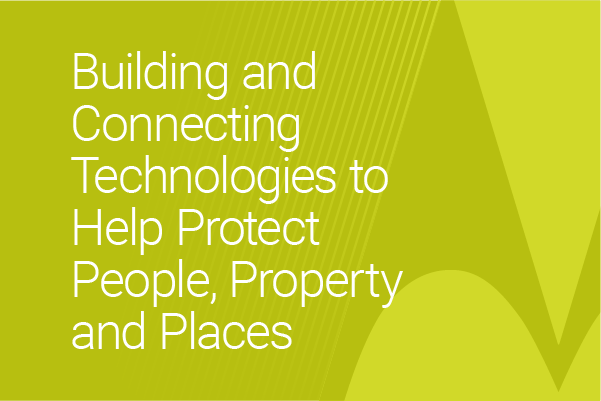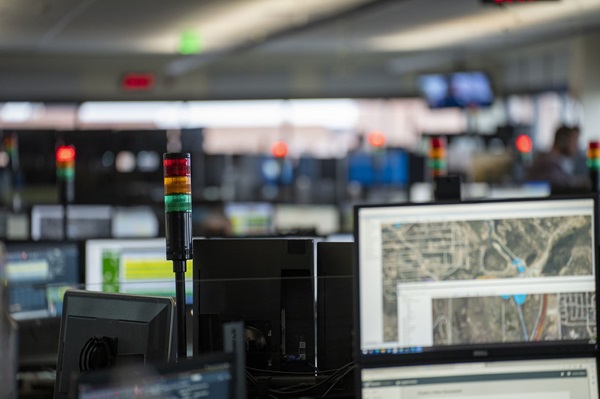In a world that focuses on “failing fast and hard,” it can be easy for innovation to be seen as another goal to be accomplished simply for the sake of crossing it off a list and achieving the accolades. But is there really value in innovating for innovation’s sake?
Clearly innovation remains a top priority for companies in every industry across the products and solutions spectrum. That’s why we continually have annual publications such as Fast Company’s list of Most Innovative Companies. The question this raises, therefore, is whether innovation is simply the end goal for these companies or whether it is a byproduct of the way the company operates.
In March of 2022, Motorola Solutions was named one of the 10 Most Innovative Companies in Design. Who better to discuss this idea with, than Motorola Solutions’ UX Design team?
The Relationship Between Human-Centered Design and Innovation
Designing products for critical moments in the public safety and private security industry is incredibly complex. That’s why human-centered design (HCD) — the process behind understanding a user’s needs, the outcomes they’re trying to achieve and the situations or environments surrounding them — is central to how the Research and Design teams at Motorola Solutions operate.
Marisa Goliber, Global Head of UX Design, believes that the HCD process leads to innovation because it helps a designer come up with multiple concepts, rejecting some and iterating on the designs that will be most impactful for the end user.
“Let’s demystify innovation, in that it is simply a label for solving problems in a unique or different way.” Goliber said. “Innovation isn’t the end goal of HCD. The end goal is to create effective products in service to our users. HCD enables the output of innovative solutions that are desired, usable, and effective, vs. solutions that are unique for the sake of being unique.”
Maggie Wang, UX Platform Lead, said a human-centered design process allows the team to discover innovation opportunities based on user needs which they uncover over thousands of hours of customer research.
“It requires time investments in the beginning to drill that deep into users’ workflows but it’s well worth the time,” Wang said. “Often, we are constrained by the existing solutions, and human-centered design encourages people to think outside of the box.”
Many companies may try to achieve innovation through the “throw it out there and see what sticks” approach. This can be helpful in exploring new and different ideas, but less helpful in understanding which idea is the right one. Scott Arnold, Director of Design Systems & Design Operations, believes that human-centered design innovation allows the team to gauge the possible success of an idea through the ways in which it would help someone.
“Innovation becomes truly revolutionary – truly life-changing – when it can markedly improve someone’s life,” Arnold said. “Through centering innovation on humans, we have the best chance of finding those life-altering ideas.”
Jack Yager, UX Team Lead, agreed that HCD leads to the best customer outcomes through the fastest, simplest and safest ways.
“This not only fosters innovation, but requires it to be successful,” Yager said.
How HCD and Innovation Help Solve User Needs
Today, more than any other time in the history of the world, companies are equipped to innovate with state-of-the-art technology to help solve customer problems.
“The possibilities are almost endless,” VP Veerasubramanian, UX Team Lead, said. “Knowing where and how to use that technology to make a difference is the true challenge. That’s where HCD comes in.”
Veerasubramanian defined human-centered design as identifying core unmet customer needs and leveraging available tools and technology to fulfill them. By taking the time to understand the user through primary research (such as ride alongs, observations, interviews, etc.), research and design teams can help discover the most important user problems to address. Once this is known, the design teams can create prototypes that are tested at every stage to ensure value to the end users.
Since a human-centered design process focuses on working alongside customers through the research, prototyping and iterative phases anyway, wouldn’t it be easier to simply create the product a customer directly tells you they want? Jeff Hirsch, Manager of Experience Research, thinks this is one of the least understood aspects of human-centered design and innovation at large.
“The biggest misconception is that what the customers are telling you they want is what they actually need 100% of the time,” Hirsch said. “Oftentimes, they don’t have the language or domain knowledge to know what else is possible and can only express a limited view of what they’d like their products to be. It is up to us as professionals in our field to listen to what they’re saying and use that to inspire our solutions to address the root problem being identified in the ask from the customer.”
Being able to use what customers are saying to inspire solutions rather than dictate them has become increasingly important over the last 5-10 years, especially in the public safety software industry. Many software solutions are known for being complicated and cluttered with too many buttons, fields and screens spanning multiple monitors. With the expansion of data types and quantity, especially when it comes to video and voice files, a user’s ability to digest all of the data and extract the insights needed to understand and react to the situation has been compromised. Marisa Goliber said this understanding and her team’s focus on simplicity is what has driven their changes in human-centered innovation over the years.
“There is a balance to providing the right things at the right time and not confusing or burdening our users with too much,” Goliber said. “Our innovation is centered around how we might give users exactly what they need in the moment.”
Keeping Innovation Alive
When innovation is the ultimate goal, it can feel lofty and hard to reach. But when exploration and discovery are the true goals, innovation naturally becomes a part of a research and design team’s daily workings, particularly when that team is driven by a human-centric approach. Continuously focusing on the customer’s problem to be solved and asking “how” or “why” through every stage can keep a team engaged with the task at hand and help avoid an innovation rut. This becomes especially important at a company like Motorola Solutions that has such a vast portfolio of products and end users.
Goliber said that the HCD process coupled with the capabilities the team can harness from the expanse of products, is a unique innovation advantage that only Motorola Solutions has.
“Being able to bring together what has traditionally been separate opens the door to innovative solutions that better serve our users,” Goliber said.
When asked what innovation means to them, each team member had their own definition, from creating something better than what existed before, to making people’s lives easier, to finding novel solutions to real-world problems. But the common thread through each answer was a focus on the end-user and not the solution itself.
“I find that innovation is the result of looking at the same problem in a different way,” Yager said. “If you are constantly working to improve on your existing solution, you will always be constrained by it.”
The best way to keep innovation alive is to keep the daily work human-centered, which is why innovation and human-centered design must go hand in hand. Learn more about how Motorola Solutions is leading the way in human-centered design for our safety ecosystem customers.




